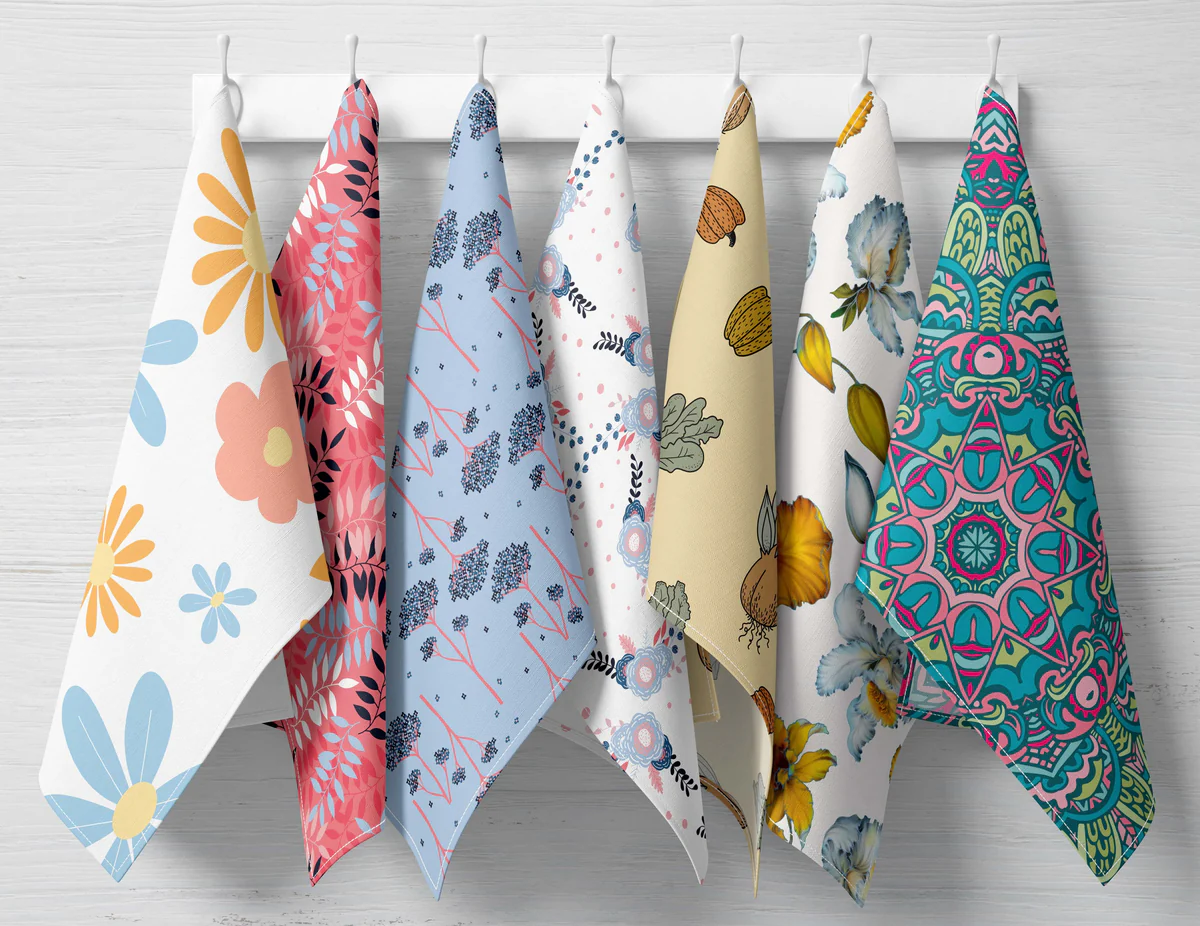
Printing high-quality graphics on towels and linens presents unique challenges, from selecting the right printing method to ensuring vibrant colors and sharp details. Whether you’re a textile manufacturer, fashion designer, or digital printing enthusiast, understanding the intricacies of this process is essential to delivering top-tier products. In this article, we’ll explore the key techniques, materials, and best practices for achieving superior results in towel and linen printing, drawing on HOLDWIN’s expertise in advanced digital printing solutions.
The first step in achieving high-quality graphics on towels and linens is selecting the appropriate printing technique. Each method has its advantages and limitations, depending on the fabric type, desired print quality, and production scale.
Heat Transfer Printing: Ideal for smaller quantities and complex designs, heat transfer printing involves applying heat to transfer ink onto the fabric. This method offers excellent color accuracy and detail but may not be as durable as other techniques.
Sublimation Printing: Best suited for synthetic fabrics, sublimation printing uses heat to turn ink into gas, which then bonds with the fabric fibers. This method ensures vibrant, long-lasting colors but is limited to polyester-based textiles.
Direct-to-Fabric (DTF) Printing: DTF printing is a versatile option for high-quality graphics on various textiles, including cotton and blends. It allows for intricate designs with fine details and is particularly effective for large-scale production.
UV Printing: UV printing, especially when using hybrid or flatbed machines, offers high precision and durability, making it suitable for both decorative and functional textiles. This method is favored for its ability to print on a wide range of materials, including thicker and textured fabrics.

The choice of materials plays a crucial role in the quality of the final print. Towels and linens have specific properties that must be considered to ensure optimal results.
Fabric Composition: Cotton towels are popular for their softness and absorbency, but they can present challenges in printing due to their texture. Blended fabrics, such as cotton-polyester, offer a smoother surface and better ink absorption, making them more suitable for certain printing methods like sublimation.
Ink Selection: The type of ink used is also critical. Pigment-based inks are commonly used for printing on natural fibers like cotton, offering good color fastness and durability. For synthetic fabrics, dye-based inks, particularly those used in sublimation printing, provide vibrant colors and excellent bonding with the fabric.
Pre-Treatment: Pre-treating the fabric with a coating or primer can significantly enhance print quality. This step helps the ink adhere better to the fabric and prevents issues such as bleeding or fading. Pre-treatment is especially important for DTF and UV printing, where sharpness and color accuracy are paramount.
Achieving sharp and vibrant prints on towels and linens requires attention to detail and a thorough understanding of the printing process.
Resolution and Design Preparation: Start with a high-resolution design file to ensure the final print is crisp and clear. When designing graphics, consider the fabric’s texture and how it may affect the print. For example, designs with fine lines or small text may not reproduce well on plush or heavily textured towels.
Color Management: Proper color management is essential for maintaining consistency and accuracy across different prints. Use color profiles that match the specific inks and materials you’re working with, and regularly calibrate your equipment to avoid color shifts.
Machine Calibration: Regularly calibrate your digital printing machines to ensure optimal performance. This includes adjusting the printhead alignment, checking the ink flow, and performing test prints to identify any issues before starting a production run.
Image Suggestion 3: An infographic detailing the steps of machine calibration and color management. The visual should include icons or diagrams showing equipment settings, color profile adjustments, and test print results. This will help readers visualize the technical aspects of maintaining print quality.
Printing on towels and linens comes with its own set of challenges. Understanding these issues and knowing how to address them can save time and reduce waste.
Ink Bleeding: Due to the absorbent nature of towels, ink bleeding is a common problem. To prevent this, use appropriate pre-treatment solutions and ensure the fabric is properly dried before printing.
Color Fading: Exposure to sunlight and frequent washing can cause printed designs to fade over time. Choosing the right inks and applying a protective coating can enhance the print’s longevity. Additionally, educating customers on proper care, such as washing in cold water and avoiding harsh detergents, can further extend the life of the print.
Texture Interference: The texture of towels, especially those with loops or pile, can interfere with the clarity of the print. Opting for designs with bold, solid colors or larger graphics can help minimize this issue. Alternatively, consider using flatter fabrics or those with shorter piles for more detailed prints.
Image Suggestion 4: A side-by-side comparison of prints on different towel textures—one with a high pile and another with a low pile. The image should highlight how texture affects print clarity and color saturation, providing a clear visual example of the challenges and solutions discussed.
To illustrate the effectiveness of these techniques, let’s look at a real-world example of a company that successfully implemented digital printing on towels.
Case Study Overview: A mid-sized textile company wanted to expand its product line by offering custom-printed towels for luxury resorts. They partnered with HOLDWIN to develop a solution that met their high standards for quality and durability. By using DTF printing on cotton-polyester blend towels, they achieved vibrant, detailed designs that withstood frequent washing and sun exposure.
Customer Testimonial: “Thanks to HOLDWIN’s advanced digital printing technology, we’ve been able to offer our clients stunning custom towels that not only look great but also stand up to the demands of daily use. The level of detail and color vibrancy is unmatched, and our customers love the unique, personalized designs we can now provide.” – John Smith, CEO of Luxury Textiles Ltd.
Printing high-quality graphics on towels and linens is both an art and a science. By selecting the right printing methods, materials, and adhering to best practices, you can achieve stunning results that meet the highest standards of the textile industry. HOLDWIN’s expertise and cutting-edge technology ensure that every project, whether small or large, exceeds customer expectations. As the demand for custom-printed textiles continues to grow, mastering these techniques will keep you ahead in a competitive market.

Zhiyu is passionate about good products, good services, and good prices to let consumers know that choosing us is the right choice! For partners and end customers, we will provide one-on-one considerate smart services and provide you with more high-quality procurement solutions.